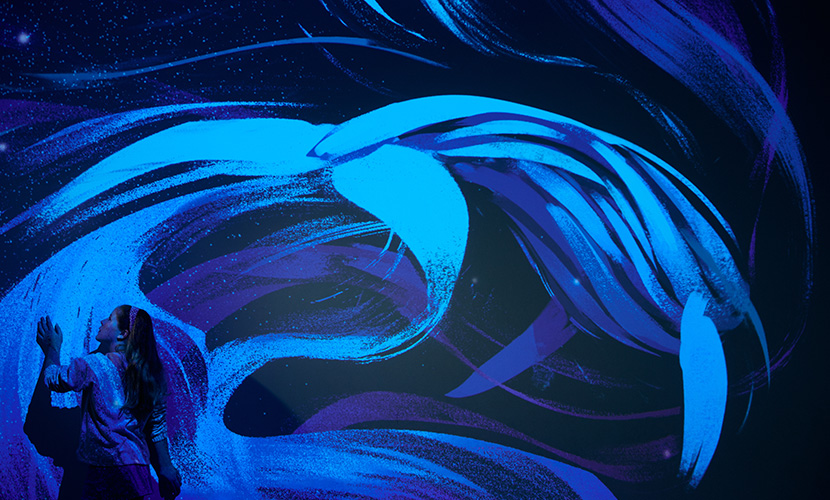How does it feel to live in the nocturnal natural world?
Tyama: A deeper sense of knowing, a digital multi-sensory exhibition taking visitors on a journey into Victoria’s vibrant nocturnal world, is opening at the Melbourne Museum on Friday, July 22.
It is a world-first immersive experience based on First Peoples’ practices of embodied learning, incorporating different projections and music composed specifically for the event from soundtracks of the natural world.
Tyama (chah-muh) is a Keerray Woorroong word that suggests ways of knowing that use all of our senses.
Miriam Capper, Tyama’s experience developer and concept lead, describes the exhibition as “creating the nocturnal worlds of Victoria’s natural environment using 360-degree projection, fantastic soundtracks and reactive technology.”
“Allowing people to feel like they have become the creatures and see the world through these creatures’ eyes, you are getting to try on something else’s shoes and see the world through their senses,” she said.
“You are stepping into it and becoming it, but at the same time, you recognise the amazing skills [of the creature] that humans don’t have.”
Ms Capper uses the example of the moths in the exhibition.
They use their antennae to smell pheromones miles away, so as part of the immersive experience, the viewer gets to follow and chase them to experience that life.
“It’s one thing to be able to step into the world; it is another thing to be given these superpowers of the different creatures to experience their world from their perspective,” she said.
The First Peoples’ way of becoming part of nature is “embodied learning”; becoming the creatures. In their culture, they paint up and dance like the creature to connect.
“In the exhibition, the projections paint over the visitor, and then you act as the creature does. The viewer achieves this by immersing themselves in the pollination of flowers. You act like these creatures and connect with them in this unique way.”
There has been much research on embodied learning.
It helps a person create memories, remember things for longer, and understand things in a way that is deeply connected to a person’s humanity as opposed to just being facts and figures.
Museums Victoria CEO and director Lynley Crosswell said Tyama was a transformational museum experience, converging presentation of collections with First Peoples’ knowledge systems and leading-edge digital immersion.
“It lets visitors experience the wonder of the natural world through extraordinary multisensory digital environments that bring to life the rich cultural and scientific life of Victoria,” Ms Crosswell said.
“Developed in close collaboration with Keerray Woorroong citizens Yoolongteeyt Dr Vicki Couzens and Yaraan Bundle, First Peoples’ storytelling and traditional ways of learning are at the heart of Tyama, inspiring us to learn about the connections between all living things that create the fabric of our world.”
Dr Couzens and Ms Bundle’s knowledge of the language and the First Person’s ways of “being, doing and knowing” was vital to the exhibition’s creation.
The exhibition uses the new science of embodied learning known by the First Peoples for thousands of years to share that depth of connection with the natural world.
Tyama is an honouring of Country reflecting the knowledge of those who have been honouring Country for thousands of years. •
For more information: museumsvictoria.com.au/melbournemuseum/whats-on/tyama/
Photography caption: Photographs by Eugene Hyland.

Bottega Tasca: Carlton’s go-to fine wine boutique








 Download the Latest Edition
Download the Latest Edition